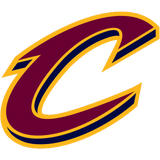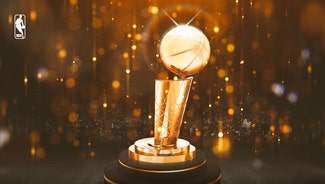
LeBron Must Adjust For The Cavs To Win Game 2
OAKLAND – The signature sequence from Golden State's Game 1 victory saw Kevin Durant racing towards a rim-rattling dunk in transition while Cleveland's J.R. Smith fled for cover. There were layers to this highlight: Durant's ferocity as he chases his first title, the game-changing impact of his decisiveness and scoring instincts when contrasted to his predecessor Harrison Barnes, Cleveland's ill-fated strategy to sell out to defend the three-point line at all costs, and the problems that arise when the Cavaliers seek out an up-tempo game against a team that's equipped with multiple weapons to exploit their weak transition defense.
Realistically, it wouldn't have made much of a difference if Smith had given a foul to stop the drive, tried to step in to take the charge, or somehow duped Durant into passing. If Golden State consistently hits the open court, with shooters running to their spots on the wings and trailers filling lanes behind the way, it's a wrap one way or another.
Rewind the tape on the Durant play a few extra seconds and the root cause of Cleveland's transition dilemma starts back from the screen. On the Cavaliers' previous possession, LeBron James attacked Durant off the dribble and headed straight into perhaps the best help defender in the league, Draymond Green. Faced with four arms worth of length contesting his drive, James opted for a kick-out pass but his options were limited. His four teammates were all on the same side of the court, Golden State's five defenders were all adjacent to the paint, and James only had a split-second to make up his mind because he had left his feet.

James' resulting decision, a bailout pass to Kyrie Irving in the left corner, was easily intercepted by Klay Thompson, who immediately pushed the ball and set up the 3-on-2 break that led to Durant's uncontested dunk.
“I had some [turnovers] where I got caught up in the air, trying to make some skip passes, and they were able to pick them off,” James said at Cleveland's practice on Saturday. “Those are like pick-sixes. It's like throwing the ball to Deion Sanders. For the most part, it's going to be a touchdown going the other way. There's a fine line. You'll have some of those tight turnovers where guys are getting into the lane and trying to make a play—that's okay. But once you get caught up in the air or you're just swinging the ball carelessly and they're picking those off, you can't have those.”

All told, James had eight turnovers in Cleveland's Game 1 loss. For perspective, he has committed more than eight turnovers just three times during his 213-game postseason career. Cleveland's 20 turnovers as a team led to 21 Golden State points, fueling the Warriors' blowout victory. Not surprisingly, that sloppiness contributed to what was easily Cleveland's worst offensive showing of the postseason.

The Cavaliers made it clear Saturday that they had no plans to make radical strategic changes or try to slow down the pace of play following their series-opening dud. “We have to play with pace,” Cavaliers coach Tyronn Lue said. “We've got to play in transition.” Richard Jefferson was even more emphatic. “Not at all,” the veteran forward said, when asked if Cleveland should pump the brakes. “We have [James], the best downhill guy in the NBA.”
Kyrie Irving also brushed off the idea that this series might devolve into the type of isolation-heavy slugfest that has favored James and the Cavaliers in the past. “This is definitely going to be a track meet between both teams,” he said, adding that the Warriors are well-equipped to provide help defense against isolation looks from Cleveland's stars. “They have different guys that they're helping off of, and we just have to be aware of that and be willing to make those passes to our shooters. They will be ready to knock them down.”
Like the turnover issues, the Cavaliers can realistically expect their outside shooting to improve in Game 2 and beyond. Aside from the Big 3 of James, Irving and Kevin Love, Cleveland shot 3-15 from deep, with Kyle Korver, Richard Jefferson and Deron Williams all shooting blanks. Nevertheless, some of the Cavaliers' most effective offense came when trusting passes found shooters like Irving described. Five of James' eight assists went to three-point shooters, and NBA.com classified 24 of Cleveland's 31 three-point attempts as “open” or “wide open.”
Korver, Cleveland's highest-profile midseason addition, is an obvious name to circle if Cleveland offensive fortunes are going to improve. The career 43% three-point shooter hit 48.5% of his threes for the Cavaliers after a midseason trade from the Hawks. That number has dipped to 39.3% in the postseason, but he still served as an X-factor in wins over the Pacers and Raptors.
“[Korver] actually had some great looks in Game 1,” James said. “Two of them in the first half for sure where he had some wide-open ones and just wasn't able to connect. One right before the halftime he had one at the top of the key, wasn't able to connect. We always like to get him involved. He does a great job of spreading the floor for us. And when he's going, the rest of our team does as well.”

If Cleveland lacks the personnel to play bigger lineups and prefers not to play more slowly, the most obvious remaining stylistic adjustment is to opt for smaller lineups. In Game 1, center Tristan Thompson went scoreless and grabbed just three rebounds in 22 minutes. As the Warriors built their lead, Lue opted for shooter-heavy lineups that didn't include Thompson in an effort to make up the deficit.
After being punished by Thompson on the glass in previous meetings, the Warriors looked committed to bracketing him with multiple box outs. They also seemed eager to force him to make quick decisions with the ball, swarming him when possible in hopes of forcing turnovers.
Thompson offered an unforgiving assessment of his own play. “Trash,” he said. “Trash. I have to be better. I have to bring more energy, make it tough for them. I know they're watching film, and something for them it's to keep me off the glass. It's going to be a wrestling match down there, and you have to keep it going and make it tough for them and just try to wear them out. … I have to be reminded that against this team, you have to go balls out.”

Although Lue said Saturday that the Cavaliers are “not worried about Tristan,” the limitations in Thompson's games show through when he's not finding success extending possessions. Perhaps most importantly, his lack of outside shooting allows Golden State to keep an extra body, often Green, near the basket area to defend against drives by James and Irving. In Game 1, the Cavaliers shot just 15-35 on attempts from inside five feet and they are facing a Warriors defense that has ranked first this postseason by allowing just 54.1% shooting within five feet. If Thompson remains neutralized on the glass and if he can't keep the defense honest with dunking finishes or extra passes to shooters, his presence will drag down Cleveland's offensive efficiency pretty quickly. James needs all the room to attack this defense that he can get and he needs as many shooting targets for his passes in post-ups and drive-and-kick scenarios as possible.
The main trade-off to cutting Thompson's role is removing one of Cleveland's most reliable and versatile defensive pieces, further exposing the Cavaliers to Durant's drives, around-the-basket opportunities for Curry and JaVale McGee lobs. That's no easy move, especially given that it would heap greater defensive responsibilities on to the likes of James and Love. If Thompson continues to be “trash,” though, Lue's only option is to embrace spread lineups and play for a shootout because his bench is devoid of defensive-minded bigs.


